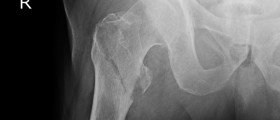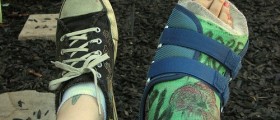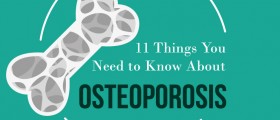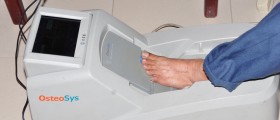
Our Troubled Companions
We often walk and stumble throughoutour lives without even thinking about those limbs which are being used wherever we go. Namely, our legs and our feet are ourpriceless companions, which we often tend to neglect. Nevertheless,our feet have the hardest job ever, which is enduring our whole bodyweight as long as we live. Taking into consideration that our feet dosuch a troublesome job, it is not strange that they get hurt quiteoften. Cuts, broken or cracked bones, over straining and twistedankles, all are a part of the everyday description of workingaccidents our feet may encounter. However, regardless of all thehardships they endure, our feet are capable of healing andregenerating quite easy and quickly. But, once we break our foot,things get a little bit different and there are certain things eachof us should know in order to provide his or her broken foot the bestcare possible and ensure the shortest healing time.
Healing Process of a Broken Foot
Having your foot broken is not the sameas having it twisted or pulled. Rather, the situation is much morecomplicated and the whole healing process is different.
First of all, once you experience abroken foot, you will feel immediate pain and extreme discomfort. Asfor the visual manifestation, there will be bruising, swelling andinflammation affecting the injured area of your foot. However, thisis all natural and presents the onset of the first stage towardshealing, new bone production and regeneration.
Secondly, blood clotting takes place.This process is very important for creating the new foot bone sinceit triggers the cartilage and tissue creation as well. In fact, onceyou leave your broken foot to do what it is capable of doing, and youtake an X-ray of your foot after a couple of weeks, you will clearlynotice new bones being created. During the period of two months afterbreakage, the new bone is completely created and adequately shaped,finishing the regeneration process. While all these stages are takingplace, our blood circulation is increased, supplying the troublesomespot with oxygen and all other elements it might need.
How Long Does It Take?
As for fractured bones, there is aminimal period of 6 to 8 weeks. Of course, we cannot possibly expectadult bones to regenerate as quickly as children bones do. Therefore,numerous other factors play an important role affecting the length ofthe healing process. Additionally, a broken thigh bone takes 3 monthsto heal, while a fractured ankle will most probably regenerate over aperiod of 6 weeks. Finally, toes and feet, also depending on numerousdifferent things, may take from 1 - 4 months in order to be restoredanew. Resting, avoiding usage of the troublesome body part, andtaking good care of the injury is crucial during these healingperiods.

















Your thoughts on this
Loading...